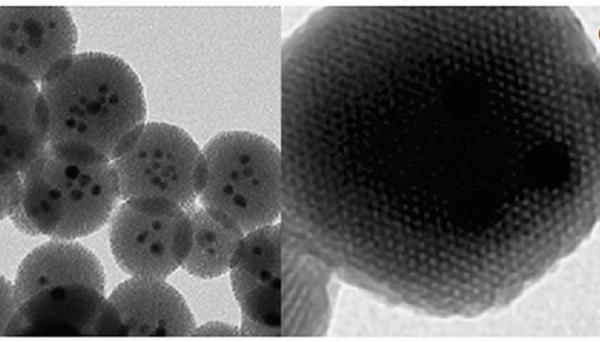Mesoporous silica – All you need to know

Strong 8k brings an ultra-HD IPTV experience to your living room and your pocket.
Nanotechnology is one of the jaw-dropping technologies of the modern era. It is nothing short of a blessing. With that, scientists have come up with amazing innovations like mesoporous silica.
Mesoporous silica is a material with a honeycomb-looking porous structure. The pores give this fascinating material a large surface area and high porosity, which makes it useful for various applications.
According to research, in 2024, the global market of mesoporous silica was calculated at USD 200.6 Million. It’s expected that it will go up to USD 395.2 Million by 2033, with a CAGR of 10.6%.
The U.S.A. is a place where you can find this material easily. However, finding a reliable Mesoporous silica supplier from various options could be a bit difficult.
Fret not; this article will not only tell you about applications and synthesizing methods of mesoporous but also guide you in choosing the right supplier.
What is Mesoporous Silica?
It is a type of material that has a unique structure with tiny pores. When it comes to the size of mesoporous silica, their pores vary from 2 to 50 nanometers in diameter.
These pores are not only uniform in size but also well-organized. This is the reason mesoporous silica has a large surface area and high porosity. And that means it has a lot of tiny spaces inside it. This property makes it effective to hold or interact with other substances.
On top of that, it is also chemically stable, which means that it doesn’t react easily with other chemicals. Lastly, it is biocompatible, meaning it is safe to use in biological and medical applications without causing any harm to living tissues.
Types of Mesoporous Silica Materials
Different types of mesoporous can be seen through its classification into different series like SBA, MCM, and many others. So, here are the series types:
SBA-16
SBA-15
MCM-41
MCM-48
The SBA series had been much more popular in 2023, with a market share of 45.3%. That said, this dominance is more likely to keep increasing from 2024 to 2033.
How to synthesize Mesoporous Silica nanoparticles?
Here are some different methods to make silica nanoparticles, each with its own process:
Sol-gel
One common method is the sol-gel process. In this method, a silica source, like tetraethyl orthosilicate (TEOS), reacts with a co-solvent of distilled water and ethanol. The solution has pH ≈2 using the droplets of HCl. After that, the sample is heated by placing in an oven for all night at 70°C. As a result, mesoporous structure comes into existence.
Hydrothermal
Hydrothermal is another method. It involves mixing TOES with distilled water at pH ≈2 using droplets of HCl and stirring the mixture for almost 2 hours. Since this method has controlled-temperature-and-pressure so it produces highly ordered mesoporous structures.
Micro-emulsion
Another sought-after technique is micro-emulsion. Here, tiny droplets of water containing the silica source are dispersed in an oil phase with the help of surfactants. These droplets act as nanoreactors, where the silica forms and organizes into nanoparticles with mesoporous structures.
Each of these methods helps to control the size, shape, and pore structure of the mesoporous silica nanoparticles in an effective way.
What are the applications of Mesoporous Silica?
Here are the major applications of mesoporous:
Catalysis
The well-defined pores in mesoporous allow for easy access to the active sites within the material. This enhances the efficiency of catalytic reactions. Plus, the large surface area provides huge space for reactants to interact with these active sites, which improves the overall reaction rates.
For instance, in fuel cells, mesoporous silica is helpful to support metal catalysts. The results? More efficient energy conversion processes. Similarly, in environmental remediation, it helps remove pollutants in water and air. This makes it a valuable tool for cleaning up the environment.
Drug Delivery
This material also shines in drug delivery. That’s just because it has the ability to control the release of medication.
The tiny, uniform pores in the silica can be loaded with drugs, which are then gradually released over time. This controlled release ensures that the medication reaches at a steady rate with no side effects.
Moreover, scientists can modify the surface of the mesoporous silica for particular cells or tissues in the body. For example, they can bind it to cancer cells, ensuring that the drug is delivered to the intended part.
This targeted approach makes us count on treatments without any damage to healthy tissues.
Sensors
You may have heard about sensors for detecting various chemicals or biomolecules. Mesoporous has proven its mettle there, too.
The material's tiny, well-ordered pores provide a large surface area that can capture and interact with target molecules. With the availability of this detection feature, not even a small amount of substance goes out of sight.
So, in medical applications, they can be used to detect glucose levels in blood.
How to find a mesoporous silica supplier?
Finding a supplier becomes easier when you look at different factors, such as:
First, you should research different suppliers thoroughly, as well as their reputation and customer reviews online. This will help you in correct decision-making.
Second, turn to check their track record of delivering consistent quality products and reliable customer service.
Then, ensure the supplier meets regulatory standards and certifications. This checkpoint ensures their products adhere to safety and quality guidelines.
Last but not least, consider whether the supplier meets your desired quantity requirements. Professional Mesoporous silica suppliers provide for both commercial and academic research.
The Best Mesoporous Silica Supplier in the U.S.A
Now, you might be thinking of looking for the mesoporous silica source. For that, ACS Materials can be your trusted supplier. They have highly stable mesoporous silica material (SBA-15) synthesized by researchers at the University of California, Santa Barbara. The adjustable diameter of the pores ranges from 5 nm to 15 nm. As well as its thick walls range between 3.1nm and 6.4nm.
The best part is that ACS Materials supplies this material not only in the U.S.A. but also around the world.
Final Thoughts
In conclusion, mesoporous silica is a significant innovation in the realm of nanotechnology. With properties like tiny size, chemical stability, and biocompatibility, this material is being used for major applications such as catalysis, drug delivery, and sensors. However, to find a reliable mesoporous silica supplier, you must consider different factors. They include portfolio, online reviews, materials quantity, and regulatory standards. Thank visiting indibloghub.com
Note: IndiBlogHub features both user-submitted and editorial content. We do not verify third-party contributions. Read our Disclaimer and Privacy Policyfor details.







